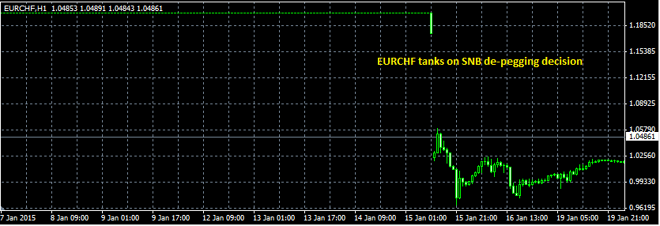Advertisement
Advertisement
Fundamental Analysis: A Forex Perspective
Updated: Mar 5, 2019, 14:40 GMT+00:00
Fundamental analysis in forex is a type of market analysis in which the trader or market analyst attempts to carry out an evaluation of currency pairs in
Fundamental analysis in forex is a type of market analysis in which the trader or market analyst attempts to carry out an evaluation of currency pairs in order to determine the true or inherent value of one currency against another, using economic and socio-political factors that affect either the currency or the country which issues the currency (or currencies) under evaluation.
The Basis of Fundamental Analysis
The basis of fundamental analysis assumes that assets have an intrinsic (true) value and a market value. There are times in the market cycle when the true value of a currency pair is at variance with the market value of the currency pair. The job of the fundamental analyst is to look at a currency using certain factors of evaluation, compare its valuation with another currency, and determine if the present value is the true value of the pairing, or if the value of one currency against another is undervalued or overvalued. If a currency is undervalued, then the trader’s response to the fundamental analysis is to assume a long position on the undervalued currency so as to profit from an expected change in the valuation towards the true valuation. Similarly, if the fundamental analyst sees a currency as overvalued, a short position will be assumed so as to benefit from a future downward move towards true valuation.
One vital component of the fundamental analyst’s toolkit is the economic news calendar, also called the forex new calendar. This calendar is a schedule of important announcements that emanate from several countries on certain economic, social and political conditions or parameters which affect each individual country over a given period of time. Some of these news releases are scheduled monthly (e.g. employment data), while some are scheduled quarterly (e.g. GDP reports). Every news release on the economic calendar contains a consensus number, a previous number, a revision to a previous number (if any) and an actual number when this is released to the market. It is the relationship of the actual number to the consensus or previous numbers (including revision) that will paint the picture of confirmation of undervaluation or overvaluation of a currency when compared with other currencies. When these numbers are released, traders all over the world will be able to confirm their fundamental analyses by reacting with a bias to either buy or sell the currency under review, or even to take no action. The reactions of traders to the economic news will bring about synchronization between the intrinsic value of an asset and the market value of the asset.
Fundamental Analysis in Forex
The next question which would logically follow is this: What are those fundamentals in the forex market which will affect one currency or another? We have the following factors:
a) Interest rates
b) Employment data
c) Manufacturing data
d) Inflation data
e) Trade data (including retail sales)
There is a whole bundle of reports which fall under these categories of fundamental data. The trader is free to explore these in the economic news calendar, which is available from forex broker sites.
Fundamental Analysis in Action
On September 6, 2011, the Swiss National Bank adopted a minimum peg for the Euro against the native currency, the Swiss Franc (CHF). This action was taken in order to reduce the buying pressure on the CHF, as traders were looking to exit a gradually weakening Euro in order to enter the CHF which was seen as a more stable currency (a safe haven currency). Being an export-driven economy, the action of the SNB was to make the CHF relatively weaker so as to make the exports of the Swiss economy cheaper. One such export is tourism. For instance, it naturally follows that if an Irish family wants to holiday in a Swiss Ski resort, it would be more beneficial to be able to exchange a certain amount of Euros for more Swiss Francs. This was the SNB’s intention: to make Swiss export products cheaper and more desirable.
Four years down the road, with an even weaker fundamental base for the Euro and with the European Central Bank contemplating a quantitative easing program, it became clear to the SNB that the cost of defending this peg, which involved flooding the market with Swiss Francs in order to buy Euros so as to prop up the value of the Euro and deplete the value of the CHF, would be highly unsustainable going forward. Some experienced fundamental analysts saw this coming as far back as October 2014. Majority of market players did not.
On January 15, 2015, the inevitable happened. Faced with a rising bill for defending the peg, the SNB de-pegged the EUR/CHF, causing it to find its true value by about 3,000 pips to the downside in a few short seconds.
This was a classic example of how fundamental analysis may have saved many traders from the outstanding losses suffered on the day of the SNB tsunami. An analysis of the setup would have shown that the CHF was heavily undervalued against the Euro, and was only being propped at increasing cost by the SNB. When the SNB decided to remove its prop, the intrinsic value of the CHF adjusted itself towards the market value of the currency against the Euro.
In conclusion, traders who correctly use fundamental analysis will be able to see some of these market movements before the rest of the retail market does, and this may hold great potential going forward.
This article was written by easy forex. For more articles please visit their website.
About the Author
Did you find this article useful?
Latest news and analysis
Advertisement
